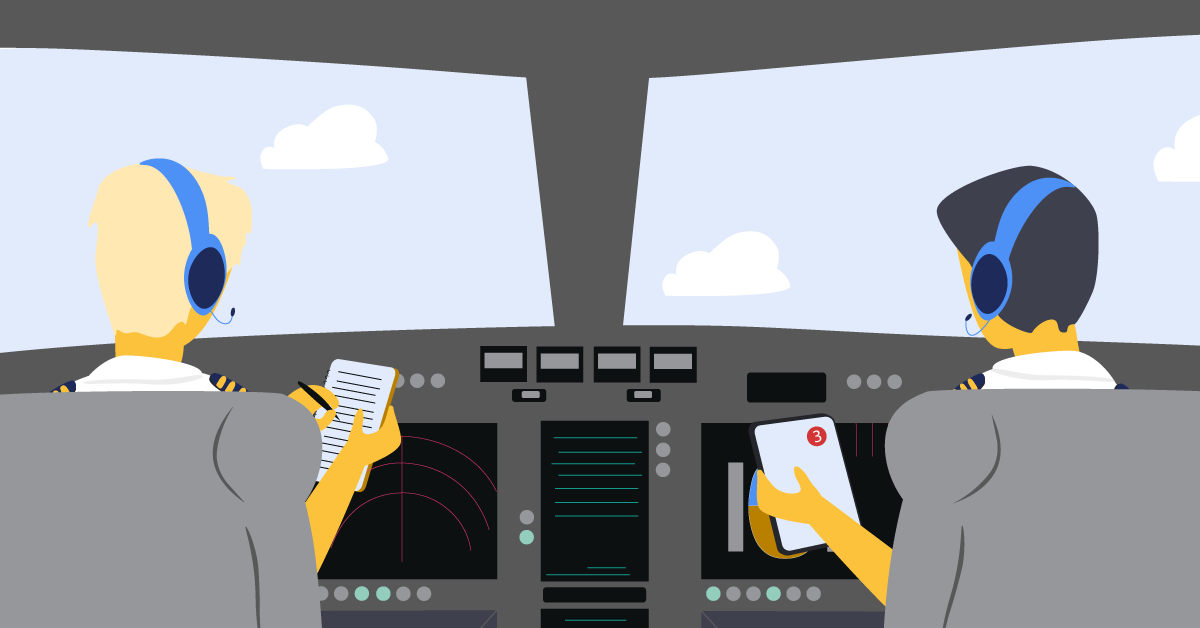In the dynamic and demanding environment of aviation, efficient communication between air traffic control (ATC) and pilots is crucial. Radiotelephony, which involves using radio equipment to transmit spoken messages between aircraft and ground stations, plays a vital role in ensuring safe and smooth operations. Given the increasing complexity of air traffic control and the need for rapid responses, integrating shorthand techniques into radiotelephony communications can significantly streamline interactions. Shorthand enables pilots to quickly and efficiently record crucial flight instructions, ensuring that all critical details are promptly noted and easily retrievable.
The Importance of Efficient Communication in Aviation
Efficient communication in aviation is not just a matter of convenience; it’s a critical safety component. Pilots and air traffic controllers must exchange information—such as flight paths, altitudes, and speeds—clearly and swiftly to maintain the flow of air traffic and ensure the safety of all flights. Delays or misunderstandings can cause serious issues, which is why efficient communication is essential.
All pilots, air traffic controllers and aeronautical station operators involved in international operations must be able to speak and understand English to a level 4.
What Are Shorthand Techniques?
Shorthand techniques in communication involve using abbreviated forms of words or phrases to convey information quickly and clearly. In written form, shorthand has been used for centuries to speed up note-taking. When applied to radiotelephony in aviation, these techniques can consist of standardized abbreviations and codes that are universally recognized within the industry.
Why Use Shorthand?
Shorthand allows pilots to quickly and accurately record information such as clearances, instructions, and important notifications during flight. This practice helps reduce misunderstandings and ensures that pilots can review instructions as needed without relying solely on memory.
Benefits of Shorthand in Aviation Radiotelephony
Speed: Shorthand techniques can drastically reduce the time it takes to send and receive messages. This is crucial in situations where time is of the essence, such as during emergencies or in high-traffic scenarios.
Clarity: By using standardized abbreviations, the chance of miscommunication is minimized. This clarity is vital in an industry where even small misunderstandings can have significant repercussions.
Reduced workload: Simplifying communication helps reduce the cognitive load on pilots and air traffic controllers, allowing them to focus more on other critical tasks, such as monitoring instruments and coordinating movement.
Examples of Shorthand Techniques
Standardized phrases: The aviation industry already uses phrases like “Roger” (understood), “Wilco” (will comply), and “Affirm” (yes), which are forms of verbal shorthand that convey clear, concise responses.
Alphanumeric codes: Using codes such as “SQ7700” for emergencies or specific codes for types of clearances can speed up communication while ensuring that the message is accurately received.
Abbreviations: Common terms and instructions can be abbreviated; for example, “T/O” for takeoff or “ALT” for altitude.
Examples of Shorthand for ATC Communications
The purpose of shorthand notes is to help you remember a clearance or transmission, typically enabling an immediate readback. There are no fixed rules for shorthand; you need to develop a system that works best for you. You can implement standard abbreviations and codes that are widely used across the industry. The system should be brief and quick, allowing you to write notes while listening to the transmission. Below, you will find some ideas to inspire your shorthand note-taking.
Altitudes: Use “L” for flight levels followed by the number (e.g., L350 for flight level 350). For altitudes below transition level, use an “A” followed by the altitude in feet (e.g., A4000 for 4,000 feet).
Speeds: Indicate speeds with “S” for speed followed by the number (e.g., S250 for 250 knots).
Headings: Use a three-digit format for headings (e.g., H090 for a heading of 090 degrees).
Frequencies: Frequencies should be noted as given, with special emphasis on decimal points to avoid confusion (e.g., 123.45).
Time: Record time in UTC, using a four-digit format (e.g., 1423Z).
Squawk Codes: Write “SQ” followed by the squawk code assigned (e.g., SQ2001).
For more tips and guidance for efficient radio communication, check our Preparation Course for the ICAO English Test.
Example of Shorthand in Use
Let’s consider a typical taxi routing clearance from ATC at London Heathrow:
“Lufthansa 615, behind Emirates A380 coming from the left, taxi left on Bravo, Foxtrot, Link 36, Echo, hold at Echo 1.”
In shorthand, a pilot might note:
“B A380 f L – L B, F, L36, E, E1 /E1”
Techniques for Effective Shorthand
Consistency: Consistently use the same symbols and abbreviations for specific items. This reduces the chance of confusion when reviewing notes.
Simplicity: While it’s important to capture all necessary details, avoid overly complex abbreviations that might be difficult to recall later.
Review: Regularly review and read back your shorthand notes to ensure they accurately reflect ATC instructions, particularly after copying complex clearances.
Mastering shorthand for copying ATC instructions is crucial for pilots, enhancing communication efficiency and operational safety in aviation. This skill allows pilots to quickly interpret and record instructions during high-pressure situations, which is essential in their daily work. Regular practice and consistent use of shorthand will make it second nature, helping pilots manage the fast-paced and complex nature of aviation communications effectively.
